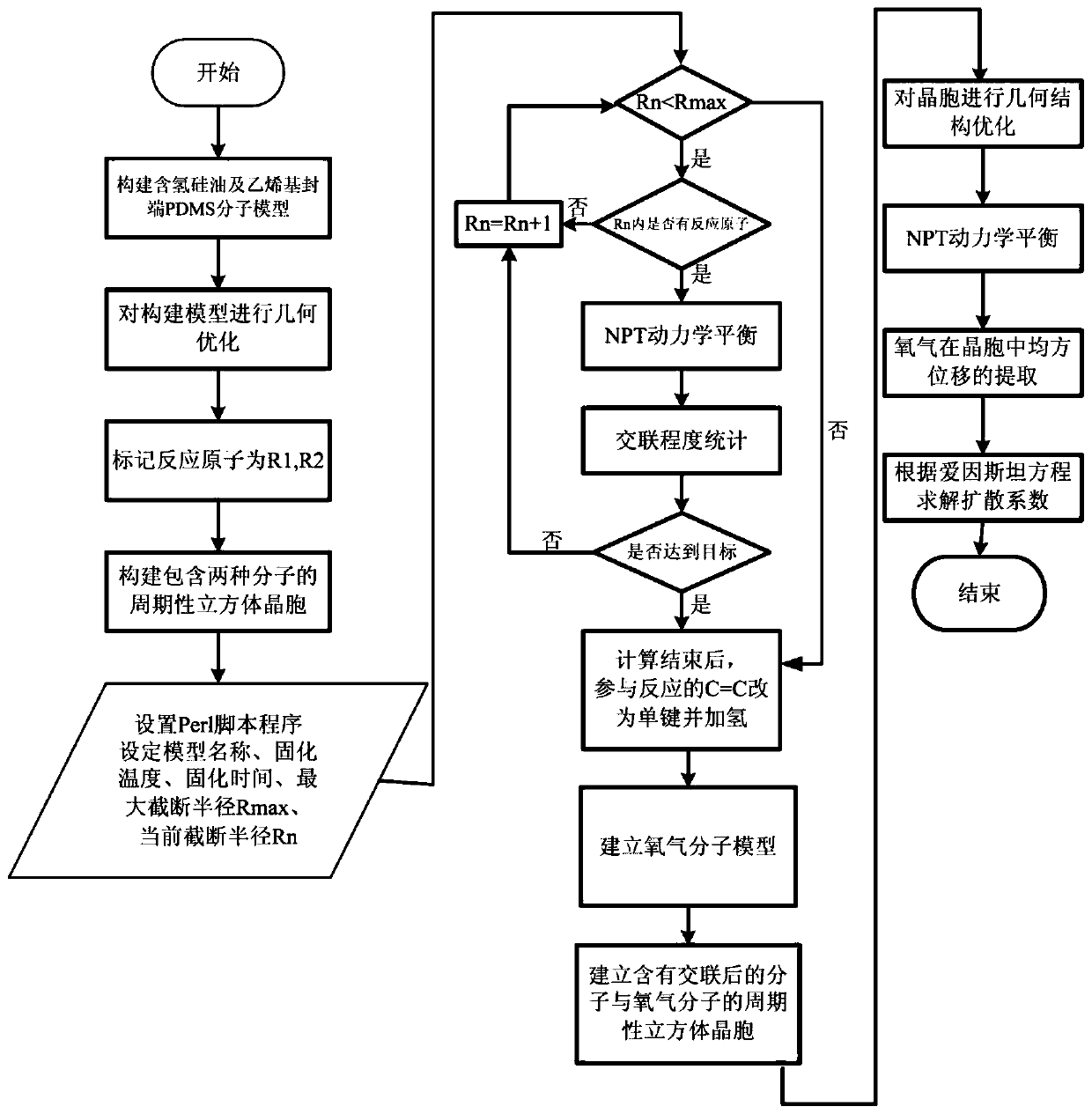Method for calculating oxygen diffusion coefficient of polydimethylsiloxane
A polydimethylsiloxane and diffusion coefficient technology, applied in the field of polymer design and synthesis
- Summary
- Abstract
- Description
- Claims
- Application Information
AI Technical Summary
Problems solved by technology
Method used
Image
Examples
Embodiment
[0039] Vinyl terminated PDMS prepolymer CH 2 =CH-Si(CH 3 ) 2 -[OSi(CH 3 ) 2 ] n O-Si(CH 3 ) 2 -CH=CH 2 And hydrogen-containing silicone oil crosslinking agent (CH 3 ) 3 SiO-[Si(CH 3 ) 2 O] X -[OSiHCH 3 ] Y O-Si(CH 3 ) 3 For example, in order to simplify the calculation speed of the model, the above-mentioned molecules are simplified as follows, let n=1, X=0, Y=1, and the built model is as follows figure 2 shown.
[0040] The specific implementation process is as follows:
[0041] Step 1: Building a Molecular Model
[0042] According to the actual molecular structure formula, the part of the model that does not participate in the reaction is simplified to obtain the following figure 2 The molecular model shown, where figure 2 (a) is the molecular model of hydrogen-containing silicone oil crosslinking agent, figure 2 (b) is the molecular model of vinyl-terminated PDMS prepolymer, figure 2 (c) is the oxygen molecule model.
[0043] Step 2: By using the C...
PUM
 Login to View More
Login to View More Abstract
Description
Claims
Application Information
 Login to View More
Login to View More - R&D
- Intellectual Property
- Life Sciences
- Materials
- Tech Scout
- Unparalleled Data Quality
- Higher Quality Content
- 60% Fewer Hallucinations
Browse by: Latest US Patents, China's latest patents, Technical Efficacy Thesaurus, Application Domain, Technology Topic, Popular Technical Reports.
© 2025 PatSnap. All rights reserved.Legal|Privacy policy|Modern Slavery Act Transparency Statement|Sitemap|About US| Contact US: help@patsnap.com



